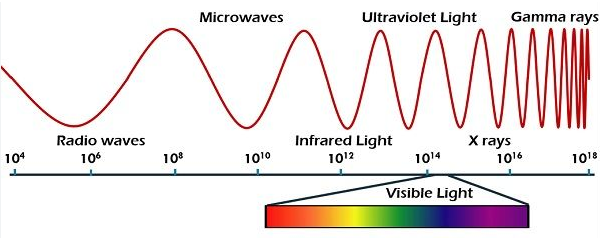Table of Contents
Frequency Range
he first thing to keep in mind is the frequency of these types of waves. The microwave transmission specifically runs over from one gigahertz to three hundred gigahertz. The microwaves have such high frequencies, so they can provide communications that require enormous bandwidths. The high-speed data transfer is one of the useful features of the microwaves that we use in almost every cellphone in order to provide the internet. For example, the vast majority of the internet WiFi routers can run at two point four gigahertz, and five gigahertz of frequency. People use the WiFi routers in their homes or another building in a single limited area to connect all their computers and smart devices. In addition, we use microwaves in the pet scanners in which the human body is scanned using high-speed data transmitting mechanisms.
Radio waves can have a frequency from three kilohertz up to the three hundred gigahertz. The radio waves are used to provide the AM radio and other radio stations. According to the frequency, we can have a set of the lower frequency radio wave used to handle a long distance communications. For instance, in the USA we use from roughly five hundred and thirty-five AM kilohertz up to one thousand seven hundred and five AM kilohertz to receive the distant radio stations in almost every state. The people from the other parts of the world can also communicate to the world by joining this frequency group. One more difference between radio waves and microwaves is that the radio waves can get into the buildings and travel over them; microwaves cannot do this.

Propagation Characteristics
Microwave transmission uses the frequencies at which such a wave can only propagate by following a line of sight. Since microwaves have higher frequencies and shorter wavelengths, they are best used for direct paths, as they can be absorbed or scattered by, for example, buildings or mountains in the middle. Microwaves are therefore used for point-to-point communication over relatively short distances. A typical example is the use of a microwave link on a cellular tower to transmit signals from one tower to another or between the tower and the spokesperson of an Internet service provider through an unobstructed path. In the case of radio waves, especially those with lower frequencies, it is advantageous that they can be significantly loosened and can pass through walls or houses. For this reason, they are used, for example, to transmit AM and FM radio waves or television signals. In the case of AM radio waves, this is because they spread from 535 to 1,705 kHz and can travel hundreds of miles, particularly at night, when they scatter between the earth and the ionosphere.
The need for a line of sight in the case of microwave transmission also has disadvantages, as it requires the installation and maintenance of the operation equipment to be above the interfering objects. In such a case, the infrastructure to be installed is always something elevated, as it is usually installed on antenna carriers or other platforms, which can be very costly to operate. In general, the microwave system is more complex, as it uses high-frequency signals, which must be renewed more often. Similarly, the costs associated with the maintenance of such a facility are several times higher, as each individual item must function with great precision, which is not the case with wave systems, which can also operate closer to the ground.
Applications
I think microwave transmission technologies are more widely used nowadays because they ensure higher data rates and bandwidth levels. Thus, such technologies are often used for satellite communications when it is necessary to send and receive large amounts of data at a high speed. For example, satellites located in geostationary orbit and ground stations are connected with an intermediate satellite dish. Signals are transferred from one satellite dish to another, and the frequencies used are usually in the microwave range. In Ku band, microwave frequencies are around 12 GHz, and in the Ka-band, they are around 14 GHz. More data, such as broadband internet, HDTV, and telephony services, are sent and received. Mobile communication systems also use these frequencies to transfer data between base stations via microwaves. They typically use 2 GHz to 40 GHz microwave frequencies with high data transmission speeds and few heavy interference.
Some of the radio frequencies are still used for long-range radio broadcasts as they can travel long distances and are not line-of-sight. Their effectiveness is caused by lower frequencies and the chance to travel long distances or get reflected broadcasting in the sky, clouds, and earth. AM radio broadcasting’s frequencies are 535 kHz to 18 MHz, and FM radio broadcasting’s frequencies are 88 MHz to 108 MHz. The application is used for long-distance broadcasting, covering significant geographic areas with multiple channels. Besides, 2 MHz to 30 MHz radio frequencies are achieved to help boats and aircraft communicate with coastal and other stations. Waves can be transmitted, and stations might use chosen frequencies for broadcasting. They are often used in maritime communications because they can be reflected back to the ionosphere.







